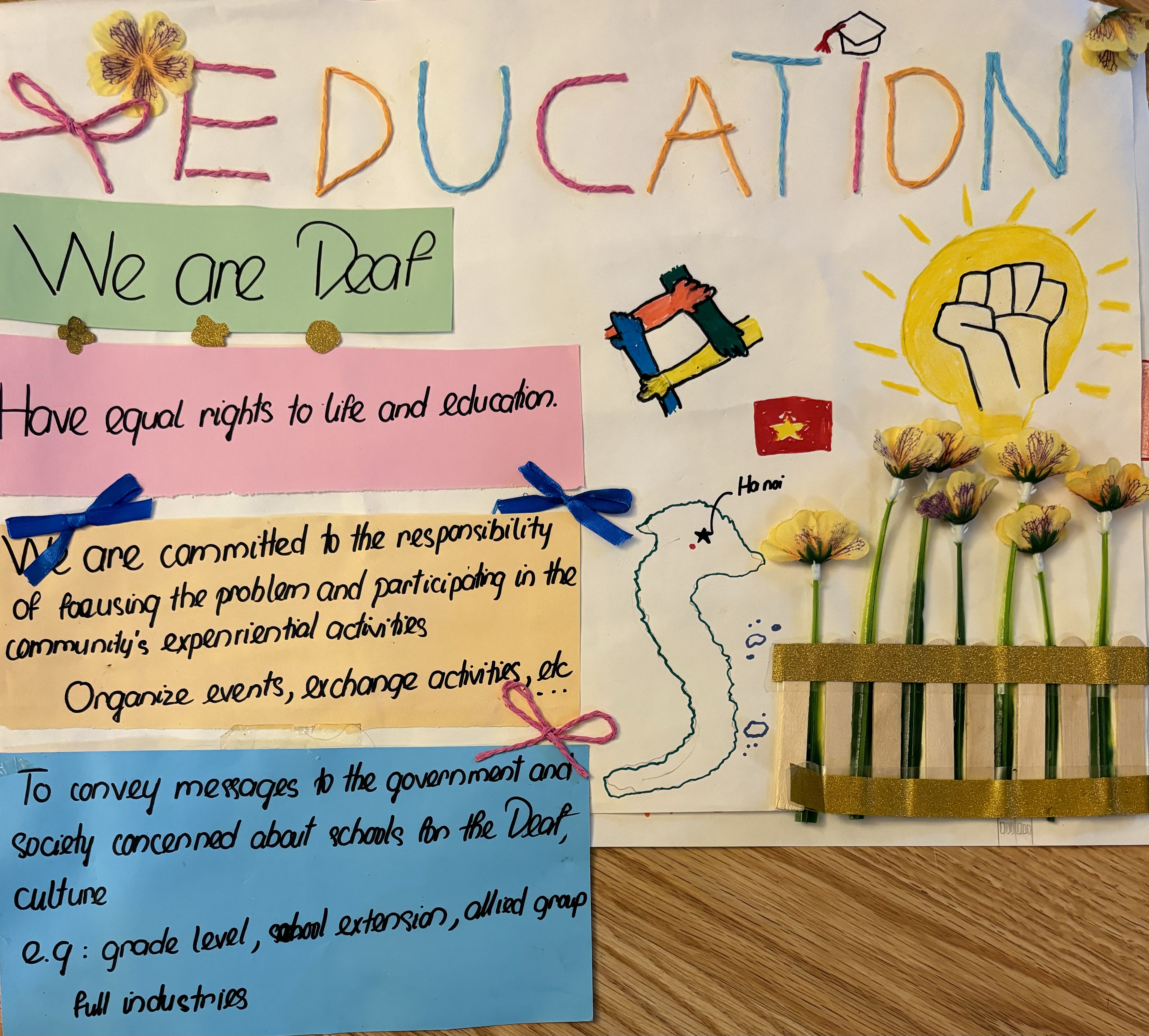Bridging the Communication Chasm Between Deaf Patients and Masked Medical Professionals
Main Article Content
Keywords
well-being, Deaf culture, education, inclusivity
Abstract
Abstract ID: 28
Submitted: December 4, 2020; Paper submitted March 31, 2021
Event: Pacific Rim International Conference on Disability and Diversity March 2021
Main Topic: Flourishing, Well-Being, and Social-Emotional Learning
Session Type: Skill Share
Other Topics: Education, Teaching and Classroom Practices, Deaf Community, Family and Community Engagement, Flourishing, Well-Being, and Social-Emotional Learning, Online Learning and Technology
Keywords Awareness, Communication, Deafness, Healthcare, Inclusivity, Medicine
ABSTRACT
This pandemic has created a huge chasm in communication between government and healthcare professionals and the deaf/hard of hearing population. A few weeks ago I was shooed away from the post office because of my deafness and the supervisor's and the agent's refusal to wear a clear mask or write things down on paper. Recently, I was denied the opportunity to schedule a medical appointment, again due to my disability. The office informed me quite bluntly that the doctor would not wear a clear mask or write things down. Aren't these medical professionals violating the Hippocratic Oath by denying patients much-needed medical care because of the patient's disability, in my case, my deafness? We now exist in a time when everyone has had to rapidly and drastically discard old, taken-for-granted ways of thinking and doing, now we need to create new ways of interacting. For most of us, such an action requires now thinking outside the box, creating innovative solutions to ensure the highest medical care for patients regardless of condition, disability, and circumstances. Medical professionals need more awareness and education in developing alternate strategies in working with their patients, how to become informed and inclusive, rather than biased and isolating. Patients are even more in need of medical care with the coronavirus impacting all aspects of health. How can they get the care they need if healthcare professionals are not willing to accommodate? Filing a complaint with the American Medical Association or even the ADA (Americans with Disabilities Act) will not create effective, long-term solutions. We should use the pandemic as an opportunity to put on our creative hats and devise solutions that will bring inclusivity, education, awareness, and, subsequently, bridge the communication chasm that masks have created. This chasm in communication and lack of disability awareness among healthcare professionals remain areas in much need of awareness and education, even more so during this unprecedented time.
Abstract ID: 28 for Pac Rim Conference (Auto-Generated January 8, 2021 11:42 am) Copyright 2021 Pac Rim Conference powered by WPAbstracts Pro Learning
Objectives 1. Discuss communication barriers that masks create for deaf and hard-of-hearing and other disabilities especially in the healthcare setting
2. Problem solve how to address those barriers
3. Create solutions that healthcare professionals and deaf patients could utilize to ensure the highest quality of care
Lead Presenter Name: Dr. Renuka Sundaram Affiliation: none Job Title: Adjunct Professor Timezone: UTC -4 (regions of USA and 31 more)
References
seriously. The Joint Commission Journal on Quality and Patient Safety, 46, 53-58.
Chodosh, J., Weinstein, B., & Blustein, J. (2020). Face masks can be devastating for people with
hearing loss. BMJ, 370, 1-2. https://doi: 10.1136/bmj.m2683.
Coyne, M. (2020). This see-through mask lets the deaf communicate while staying safe. Forbes.
https://www.forbes.com/sites/marleycoyne/2020/04/04/this-see-through-mask-lets-the-de
af-communicate-while-staying-safe/?sh=181cc5705257.
Goldin, A., Weinstein, B., & Shiman, N. (2020 May). How do medical masks degrade speech
reception? The Hearing Review, 27(5), 8-9.
Grote, T., & Izagaren, F. (2020). Covid-19: The communication needs of D/deaf healthcare
workers and patients are being forgotten. BMJ, 369, 1-2. https://doi.org/10.1136/bmj.m2372.
Harkude, A., Namade, S., Patil, S., & Morey, A. (2020 April). Audio to sign language translation
for deaf people. International Journal of Engineering and Innovative Technology, 9(10),
30-34.
Holcomb T.K. (2013). Introduction to American deaf culture. Oxford University Press.
Iezzoni, L. I., & O’Day, B. L., Killeen, M., & Harker, H. (2004, 2 March). Communicating about
health care: Observations from persons who are deaf or hard-of-hearing. Annals of
Internal Medicine. https://doi.org/10.7326/0003-4819-140-5-200403020-00011.
McShea, L. (2014, August 27). Disabled people’s health issues fall on deaf ears. British Journal
of Healthcare Assistants.
https://medicalxpress.com/news/2014-08-disabled-people-health-issues-fall.html.
Meador, H. E., & Zazove, P. (2005). Health care interactions with Deaf culture. JABFP, 18(3),
218-222. https://doi.0.3122/jabfm.18.3.218.
Mick, P., Foley, D.M., & Lin, F.R. (2014). Hearing loss is associated with poorer ratings of
patient-physician communication and healthcare quality. Journal of American Geriatric Society, 62(11), 2207-2209. https://doi:10.1111/jgs.13113.
Morgan, S., & Moriarty, L. (2016). 21st century Cures Act & the HIPAA Access Right:
Empowering patients by improving patient access to electronic health information (EHI). https://www.healthit.gov/sites/default/files/2018-12/LeveragingHITtoPromotePatientAccess2.pdf.
Pandhi, N., Schumacher, J. R., Barnett, S., & Smith, M.A. (2011). Hearing loss and older adults’
perceptions of access to care. Journal of Community Health; 36(05), 748-755.
Pratt, S.R. (2018). Profound hearing loss: Addressing barriers to hearing healthcare. Seminars in
Hearing, 39(4), 428-436. https:doi:10.1055/s-0038-167708.
Ries, P. W. (1994). Prevalence and characteristics of persons with hearing trouble: United
States, 1990-91. National Center for Health Statistics. Vital Health Statistics,10(188), i-17.
Sundaram, R. (2021). Bridging the communication chasm between deaf patients
and masked medical professionals. Presentation. Pacific Rim International Conference on Disability & Diversity.


